
In this lesson, students analyze objects and images to determine their effect on society during World War II.
- Subject:
- Social Studies
- Material Type:
- Lesson Plan
- Provider:
- Smithsonian Institution
- Date Added:
- 07/06/2017

In this lesson, students analyze objects and images to determine their effect on society during World War II.

In this lesson, students analyze news sources from the Vietnam War era to describe how POWs and their families were represented in the media. Students will then write letters from the perspective of a POW relative that describe the concerns of POW families and that propose a possible solution to the POW dilemma in Vietnam.

In this lesson, students document their classmates' reactions to 9/11 to gain a perspective on the variety of responses people had to the tragedy. Students will research the national reaction to 9/11 by examining polls and government actions.
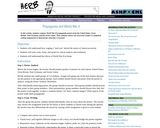
In this activity, students compare World War II propaganda posters from the United States, Great Britain, Nazi Germany, and the Soviet Union. Then students choose one of several creative or analytical writing assignments to demonstrate what they've learned.
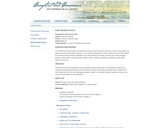
In this lesson, students will learn how to identify the social and political impact of World War I on individuals and groups by analyzing propaganda developed by the Committee for Public Information during World War I. Students will then create their own “Pro-War" propaganda (poster, speech, or song) with a specific audience, emotion, and common characteristics of the WWI pieces.
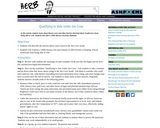
In this activity students learn about literacy tests and other barriers that kept black Southerners from being able to vote. Students also take a 1960s literacy test from Alabama.
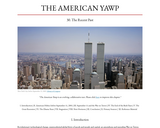
A chapter from The American Yawp open source history textbook focusing on, "The Recent Past."

In this lesson, students will use political cartoons to become familiar with the issues of nativism and protectionism, specifically in regard to the era of the Red Scare.

In this extensive, PDF unit focused on the Red Scare, Palmer raids, and civil liberties, the lessons will root the events of 1919-1920 in the disruptions generated by the First World War. The rise of Soviet Russia after 1917, as well as the wave of labor strikes that reverberated across the United States following the Armistice, serve as an entry point for this unit’s analysis of attacks on civil liberties during this period. Students will examine the American state’s suppression of dissent in the name of domestic security. It introduces students to the popular discourse that framed social critics like Emma Goldman as dangerous agitators. It also discusses legislation (such as the Sedition Act of 1918) and statements by American government officials (A. Mitchell Palmer’s “The Case Against the Reds”) that justified the arrest and deportation of individuals whom the United States deemed “undesirable.” Red Scare! encourages students to analyze and debate the often tenuous nature of constitutionally-protected freedoms in times of civil distress.
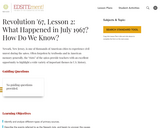
In this lesson, students analyze primary sources to describe the events referred to as the Newark riots, and begin to uncover the causes for the unrest.

In this activity, students will use primary and secondary sources to learn about the roles of women on the homefront during WWII. Students will research and write their parts for a class play that will be video-recorded. Students will also compare the effects on the people on the Homefront during WW2 with the people on the Homefront during the U.S. conflicts of today in Iraq and Afghanistan.
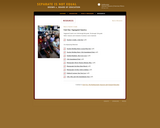
In this lesson plan from the Smithsonian's National Museum of American History, students will identify and discuss the condition and aspirations of free African Americans in the years following the Civil War, identify the social factors that led to the rise of Jim Crow segregation and evaluate the effects of segregation.
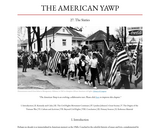
A chapter from The American Yawp open source history textbook focusing on, "The Sixties."

This inquiry-based lesson plan addresses the supporting question "What were the experiences of soldiers in combat?" and helps students understand what life was like during WWI from the perspective of an NC doughboy.

This inquiry-based lesson plan addresses the supporting question "What happened when soldiers returned home?" and helps students understand what happened after WWI came to an end.

In this lesson, students investigate the Vietnam War. The lesson stresses the importance of the Tet Offensive in turning American public opinion against the war and illuminates how the Vietnam War remains a vital part of American life and culture.

The Great Migration of African Americans from the rural South to the urban North in the first half of the 20th Century is one of the pivotal social events in U.S. history, and helped to set the stage for the modern Civil Rights movement. By examining historical letters, pictures and editorial cartoons, students will come to understand the motivations behind the migration, and its lasting impact on small communities and cities.

After four long and bitter years of a disastrous conflict that claimed the lives of over 620,000 soldiers, a haggard and worn president looked over the crowd and uttered the immortal words: “With malice toward none, with charity for all, with firmness in the right as God gives us to see the right, let us strive on to finish the work we are in, to bind up the nation’s wounds, to care for him who shall have borne the battle and for his widow and his orphan, to do all which may achieve and cherish a just and lasting peace among ourselves and with all nations.

As Soviet and U.S. soldiers worked together to liberate Germany at the end of World War II in Europe, many on both sides hoped for continued friendship between the two countries. However, problems had been building between the two nations both before and during the war. Combined with the incompatibility of the economic and political systems that drove both countries, significant foreign policy clashes were imminent.
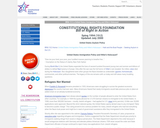
In this lesson, students review the history of immigration quotas in the United States and the issue of how to assist Jewish refugees in the time of WWII. A set of discussion questions is provided. In an associated activity, students role play a meeting between President Roosevelt and members of his cabinet where they will review 5 proposals concerning the issue of aid to Jews during the war.